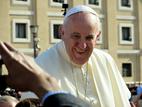In the Gospels, Jesus did not mention the concept of “church” which is widely known today.
What he mentioned in the Gospels, which is also widely quoted as an argument for the meaning of a church, is “for where two or three come together in my name, there am I with them.” (Matthew 18:20) What was actually conveyed is far from today’s church concept. The quoted passage of Jesus emphasizes more on the small group of equality and freedom among believers. Just like the relationship between Jesus and his disciples, only such a group can think freely to generate free thoughts.
Today’s church is actually more similar to that of the Jewish synagogue system. The synagogue system was formed during the Diaspora era. The Jews who were forced to emigrate by the Persian Empire carried out Jewish worshiping practices by adopting the local environment in order to preserve their national identity. Under such a background, the synagogue turned out to be the boundary ‘wall’ between Jews and the Gentiles and played the role of protecting and supporting the identity of their ethnic origin.
The emergence and rise of the church have the same historical environment and logic.
Obviously, before Jesus was crucified, there was no such a group as the church as it is known today. In Jesus’ following, the member identities were only Jesus and his disciples. The disciples called Jesus rabbi and there were no other positions. The relationship between Jesus and his disciples was also simple and equal and his disciples could express themselves freely before Jesus.
After Jesus ascended to heaven and after the second Jewish war, Christianity began to split from Judaism existing no longer as a Judaic branch but entering the historical stage with an independent attitude. At this time, Paul’s participation completely changed the existing structure and mode of Christianity. Paul, who was born into the Pharisees, obviously established the Christian church organization with the Jewish synagogue system and set up the corresponding church structure.
As history went on, the influence of the church on secular society and regime began to increase, and the importance of the church was constantly emphasized until Constantine the Great enlightened Christianity as the national religion for the need of imperial controls. So far, for three or four hundred years since the birth of the church to its politicization, its form has been completely fixed. The church of this concept continues till today.
The Catholic papal state is the most brilliant existence of the church in history, and it has also laid an ideal template for the existence of all churches.
The development of history is not led by man but by God. Since the establishment of the papal state, there has been an undercurrent in history - the resistance of small groups. At the beginning of the spontaneous movement, the monastery was a spontaneous small group, but it was soon embraced by the papal state. The Church founded by St. Francis also tried to return to the Jesus model and was embraced by the papal state. It was not until the religious reform, supported by the secular regime, that the papal state’s grand church model was successfully broken.
However, as a result of the disintegration of the large church, small groups will inevitably come into being.
The Chinese church has always been in line with the big church in history. In the Western missionary movement to China, the establishment of a Christendom was the dream of missionaries whether it was the China Inland Mission established by Hudson Taylor or by the Presbyterian Church of the United States.
In the 1980s, after the reform and opening-up, Christianity began to revive in China, and its revival was still in the mode of large churches. Thanks to the acceleration of economic growth, the opening of the country, and the international funds and investments, the 1990s to the decade after China’s accession to the WTO was the period of large churches. Characterized by the wave of urbanization, cross-regional groups emerged, entering the cities one after another in this period.
With the further development of the economy, improvement of social structure, and a change of the external environment, the period of large churches also tends to decline. However, what still accelerates the decline even to the point of disintegration is the COVID-19 pandemic which surged in 2020.
The economic downturn brought about by the COVID-19 pandemic and the compression of the physical space for gatherings have made large churches lose their resources of income and the base of believers. Meanwhile, due to the decrease of physical gatherings, online gatherings that can break the space limitation and be freely combined have emerged. Furthermore, physical small group gatherings that meet the pandemic prevention requirements have also become the trend.
The decline of large churches brought about not only the rise of small groups but also the unprecedented activity of Christian thoughts. Without the dogmatic control of orthodox doctrine by large churches, free thought is not only possible but also trendy.
On the surface, perhaps, the present environment is a critical moment for Christianity. But, to be exact, it is the crisis period for large churches. The way of existence of the gospel of Christ and Christian faith is not controlled by the church but by a group gathered in his name as Jesus said in the gospel books.
The equal relationship among believers in small groups and the thought collisions brought about by free thinking will inevitably become the mainstream of China’s Christian development in the future, and even become the origin of new ideas and models. Traditional Christianity was just like fast videos and square dances which were the choice of specific ages and cultural groups.
(The article does not necessarily reflect the views of China Christian Daily. Opinions expressed are solely those of the author.)
- Translated by Charlie Li












